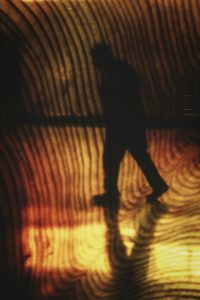 The ubiquitous and frequently crippling emotion of anxiety is a complicated phenomenon that has long fascinated scientists, philosophers, and psychologists. The symptoms of anxiety range from physical symptoms like rapid heartbeat, sweating, change in skin tone, trembling, shortness of breath, and muscle tension. Sometimes anxiety blurred vision may occur. Psychological symptoms of anxiety may include constant worry, seemingly irrational fears, anxiety panic attacks, catastrophic thinking, irritability, and social withdrawal. It is worth adding that those two lists are non-exhaustive, symptoms depend on the individual and the context.
The ubiquitous and frequently crippling emotion of anxiety is a complicated phenomenon that has long fascinated scientists, philosophers, and psychologists. The symptoms of anxiety range from physical symptoms like rapid heartbeat, sweating, change in skin tone, trembling, shortness of breath, and muscle tension. Sometimes anxiety blurred vision may occur. Psychological symptoms of anxiety may include constant worry, seemingly irrational fears, anxiety panic attacks, catastrophic thinking, irritability, and social withdrawal. It is worth adding that those two lists are non-exhaustive, symptoms depend on the individual and the context.
From a psychoanalytic standpoint, anxiety is a signal emanating from the depths of our psyche, rather than just a symptom. The three levels of consciousness—the conscious, preconscious, and unconscious—that make up the topographic model of mental functioning are described by Sigmund Freud's psychoanalytic theory. In this framework, anxiety often arises in the unconscious mind as a result of unresolved conflicts or the repressed. It can act as a warning sign, making us aware of possible internal and external dangers. Automatic anxiety and signal anxiety are the two categories that Freud distinguished. Automatic anxiety is the subject's response each time he encounters a traumatic event; that is, each time he is faced with an influx of stimuli, whether internal or external, that he is unable to cope with. Automatic anxiety implies no prejudgment but reacting to stimuli from the environment that seem too much to handle. It is more of a primitive type. Although signal anxiety is the ego's reaction to perceived threats, whether internal or external, it can also function as a warning signal. An interview for a job, for instance, may trigger signal anxiety. For example, it can spur someone to get ready for the interview, dress appropriately, and show up on time. On the other hand, signal anxiety might have the opposite effect and cause the person to either avoid the situation or somehow "sabotage" it.
The Origins of Anxiety
Although certain life events can set off anxiety, psychoanalysts contend that early childhood experiences are frequently the source of anxiety. Anxiety patterns later in life may be rooted in an infant's natural helplessness and reliance on carers. For instance, the fear of being abandoned can give rise to separation anxiety. These early anxieties can internalise as we mature and show up as a variety of adult anxiety disorders, including social anxiety disorder, performance anxiety, and generalised anxiety disorder.
Anxiety as a Defence Mechanism
It is noteworthy that anxiety can function as a protective mechanism as well. The mind may turn to anxiety to avoid dealing with these deeper issues when faced with overwhelming emotions or unacceptable desires. A person who is afraid of public speaking, for example, may be unintentionally avoiding the scrutiny and vulnerability that come with public speaking.
Beyond Symptom Management
Psychoanalysis attempts to address the underlying causes of anxiety, in contrast to many modern approaches that concentrate on symptom management. People can gain a better understanding of themselves and their behavioural patterns by exploring their unconscious. This self-discovery and re-discovery can lead to lasting changes and a greater sense of well-being.
Although psychoanalysis offers a valuable understanding of the nature of anxiety, it is important to keep in mind that there is no one-size-fits-all approach to treating anxiety.
 Cinematic Anxiety: Revealing the Monster
Cinematic Anxiety: Revealing the Monster
Movies have a unique ability to transport us into the minds and lives of others. In doing so, they often offer a powerful lens through which to examine complex human emotions like anxiety. Let’s look at some well-known cinematic depictions that have contributed to a greater understanding of this sometimes misconstrued mental health issue.
As a well-mannered man struggling with overwhelming anxiety, Adam Sandler gives a surprisingly nuanced performance in Punch-Drunk Love. The movie does a fantastic job of capturing the physical aspects of anxiety, such as shaking and fast breathing, as well as the overpowering feeling of loneliness.
Although the main subject of the movie Silver Linings Playbook is bipolar disorder, Bradley Cooper's character also provides a moving representation of anxiety. His agitated state and obsessive-compulsive behaviours serve as a clear reminder of the difficulties experienced by individuals with anxiety.
Although Mark Zuckerberg's persona in The Social Network is frequently portrayed as cold and calculating, there is a deep-seated fear of failure and rejection underneath the surface. The movie raises the possibility that his unwavering drive for achievement was fuelled by social anxiety.
The anonymous office worker played by Edward Norton in the movie Fight Club is overcome with a feeling of emptiness and unhappiness. His destructive coping mechanism is the alter ego he created out of anxiety.
In Black Swan, intense performance anxiety drives Natalie Portman's character through a psychological metamorphosis. The movie looks at the darker side of ambition and the extremes people will go to in order to succeed.
 Literary Characters as Anxiety's Protagonists
Literary Characters as Anxiety's Protagonists
There is a vast array of literary characters that face anxiety in various ways. Examining the lives of a few of these complex individuals, let us see how their experiences help us understand the nuances of various phenomena.
Holden Caulfield, the Overwhelmed Intellectual in The Catcher in the Rye
Adolescent anxiety is typified by J.D. Salinger's enduring anti-hero, Holden Caulfield. Stressed minds are characterised by feelings of alienation, a fear of appearing fake, and an unending quest for genuineness. Holden perceives his anxiety as a barrier that keeps the overwhelming and corrupt world outside of him.
Winston Smith, The Paralysed Protagonist (1984)
The protagonist of George Orwell's dystopian masterpiece, Winston Smith, suffers from anxiety and uncertainty. Being in a totalitarian state causes Winston constant anxiety because it is a constant threat. The deeper worries of a surveillance society are reflected in his internal conflicts.
The Socially Anxious Antihero Leonard (The Big Lebowski)
Although The Dude, or Leonard, from the Coen brothers' cult classic movie, may not come across as nervous, beneath his laid-back exterior is a deep-seated fear of social interaction and confrontation. His need for calm and tranquillity serves as a defence mechanism against the chaos of the outside world.
Ophelia, the Creative Soul in Crisis (Hamlet)
Shakespeare's Ophelia is a tragic figure whose environmental pressures are frequently blamed for her spiral into madness. Her unfulfilled love, cultural norms, and the sad circumstances involving her family are the causes of her anxiety. Her persona is a potent reminder of the destructive nature of mental anguish.
